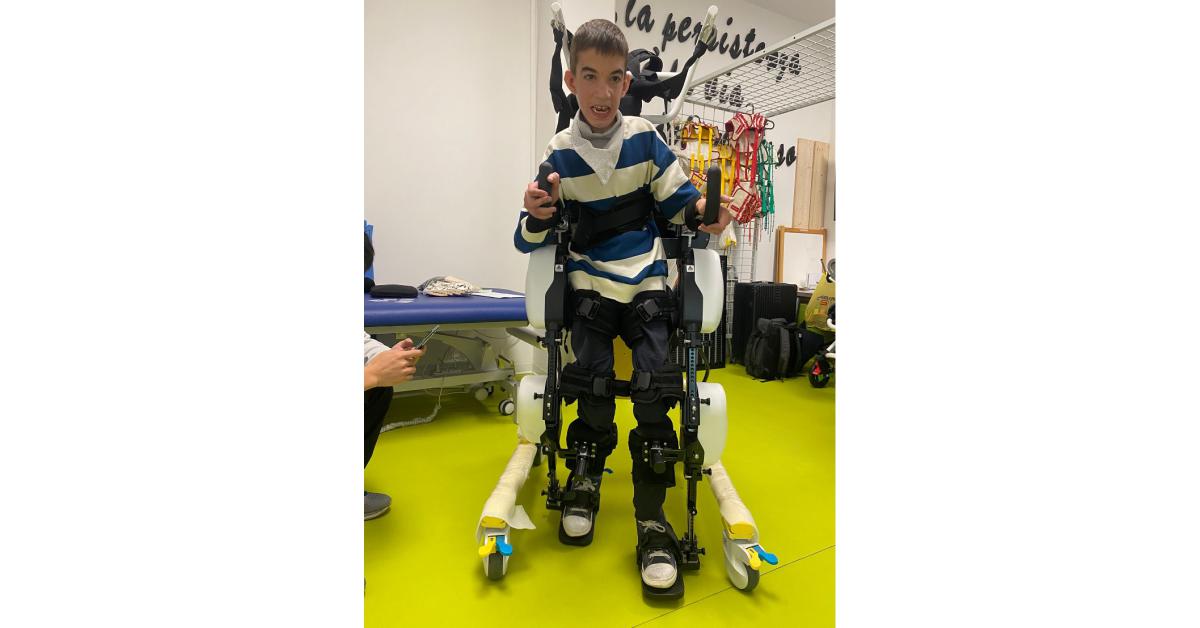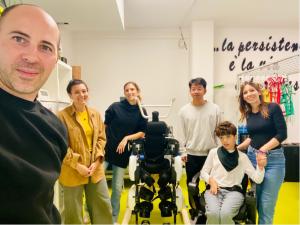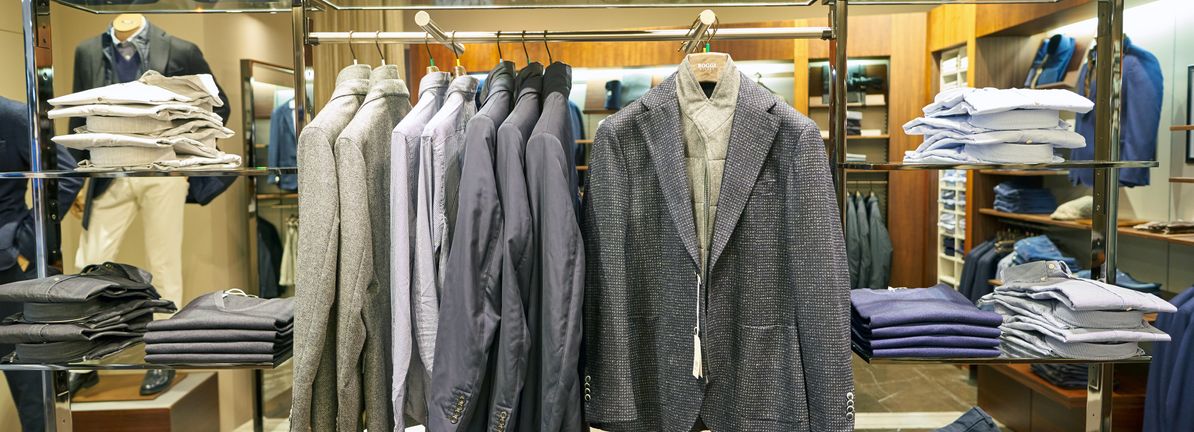More than 70,000 Palestinians have been killed as a result of Israel’s military campaign in Gaza, according to the territory’s Hamas-run health ministry.
The death toll has continued to rise since a ceasefire took effect on 10 October, with…

More than 70,000 Palestinians have been killed as a result of Israel’s military campaign in Gaza, according to the territory’s Hamas-run health ministry.
The death toll has continued to rise since a ceasefire took effect on 10 October, with…

A young patient stands upright in RoboCT’s KidGo exoskeleton during supervised gait training at a Pisa rehabilitation centre.

Representatives from the clinic and RoboCT pose with a young patient wearing the KidGo exoskeleton during a…

Life in the deep ocean often sorts into hidden zones shaped by temperature, salt, and moving water. Many animals, like Botrynema jellyfish, stay within a narrow band of conditions, almost like having a stable homeland.
When a marine species turns…

Oscar-winning British playwright Tom Stoppard, whose celebrated work revolutionized modern theater and earned him one of cinema’s highest accolades for Shakespeare in Love, has passed away at the age of 88.
According to his agency, United…

American Eagle Outfitters has caught the market’s attention after the company’s latest earnings exceeded expectations on both revenue and profit. The brand’s Sydney Sweeney campaign is getting credit for boosting investor interest and sales growth.
See our latest analysis for American Eagle Outfitters.
American Eagle’s share price has been on a hot streak, jumping 20% in the past month and delivering a 58% gain over the last 90 days, as upbeat earnings and the Sydney Sweeney campaign have reinvigorated momentum. While the 1-year total shareholder return of 10% is not as eye-catching, recent trends suggest growing investor confidence, especially as institutional buyers and analysts show increased interest in its growth story.
If American Eagle’s recent run has you interested in what else could be taking off, it’s a great moment to explore fast growing stocks with high insider ownership
With American Eagle’s shares surging and momentum building, investors are now debating a critical question: is the current price an entry point for further gains, or is all the future growth already reflected in the stock?
At $20.40, American Eagle Outfitters is trading well above the fair value estimate of $16.44 set by the most widely followed narrative. The gap between valuation and market enthusiasm prompts investors to consider the sustainability of this rally.
The analysts have a consensus price target of $15.167 for American Eagle Outfitters based on their expectations of its future earnings growth, profit margins and other risk factors. However, there is a degree of disagreement amongst analysts, with the most bullish reporting a price target of $21.5, and the most bearish reporting a price target of just $10.0.
Read the complete narrative.
What if the crowd is wrong? The valuation depends on significant changes in future margin forecasts, ambitious profit assumptions, and a strongly debated multiple that could surprise even experienced investors. The calculations behind the forecast involve some unusual factors. See what is driving these projections.
Result: Fair Value of $16.44 (OVERVALUED)
Have a read of the narrative in full and understand what’s behind the forecasts.
However, ongoing consumer uncertainty and rising tariffs remain notable risks that could quickly shift the outlook for American Eagle Outfitters in the future.
Find out about the key risks to this American Eagle Outfitters narrative.
Stepping away from price targets, our DCF model offers a longer-term take. Using projected cash flows, the SWS DCF model suggests fair value is much lower, at just $11.04 per share. This is well below both market price and analyst targets. This raises questions about whether recent optimism can last.

Jakarta Vice Governor and veteran actor Rano Karno used a JAFF Market panel in Yogyakarta to outline a plan to position the capital as a global filmmaking hub ahead of its 500th anniversary in 2027, declaring, “It’s time,” as he called…

TJX Companies (TJX) delivered a strong third-quarter earnings report, easily outpacing sales and profit expectations for fiscal 2026. The company followed up by raising its full-year sales and earnings forecasts, which signals management’s confidence in ongoing growth and market share gains.
See our latest analysis for TJX Companies.
TJX shares recently hit a new all-time high, reflecting a wave of investor optimism after the company beat estimates and raised its outlook for the year. The momentum is clear in the numbers, with a share price return of 25.4% year-to-date and a one-year total shareholder return of 22.4%, compounded by an impressive 97.5% over three years. With upbeat earnings and rising investor confidence, TJX is showing strong signs of durable long-term growth.
If TJX’s market momentum has you thinking bigger, now’s the perfect time to broaden your horizons and explore fast growing stocks with high insider ownership
With TJX shares pushing to fresh highs, investors face a pressing question: does the stock have further room to run, or has upbeat performance led the market to already price in sustained earnings growth?
With TJX Companies’ last close of $151.92 and the most-followed narrative fair value at $159.16, market consensus suggests there is still some upside for the stock based on updated business momentum.
The company’s strong portfolio of brands and ability to adjust pricing across nearly all categories have allowed it to maintain value proposition scores, supporting customer loyalty in a dynamic retail environment.
Read the complete narrative.
Want to know the secret behind this premium valuation? There is a delicate mix of ambitious earnings forecasts, margin improvements, and bold assumptions for future growth. Click through to uncover what figures drive this narrative’s punchy price target and just how bullish those projections really are.
Result: Fair Value of $159.16 (UNDERVALUED)
Have a read of the narrative in full and understand what’s behind the forecasts.
However, risks remain. An accelerating shift to e-commerce or changes in sourcing dynamics could dampen TJX’s future growth story and margin outlook.
Find out about the key risks to this TJX Companies narrative.
Looking through a different lens, TJX shares are trading at a price-to-earnings ratio of 33x. This is much higher than the US Specialty Retail industry average of 18x and the peer group at 20.2x. The market’s fair ratio points to 21x, so today’s valuation carries added risk if expectations slip. Does this premium suggest the stock has already run too far ahead?

After being terrorized by constant Black Friday ads on our phones, TVs, and inboxes for a month straight, one has to wonder: Of all of the best Black Friday deals, what do people…